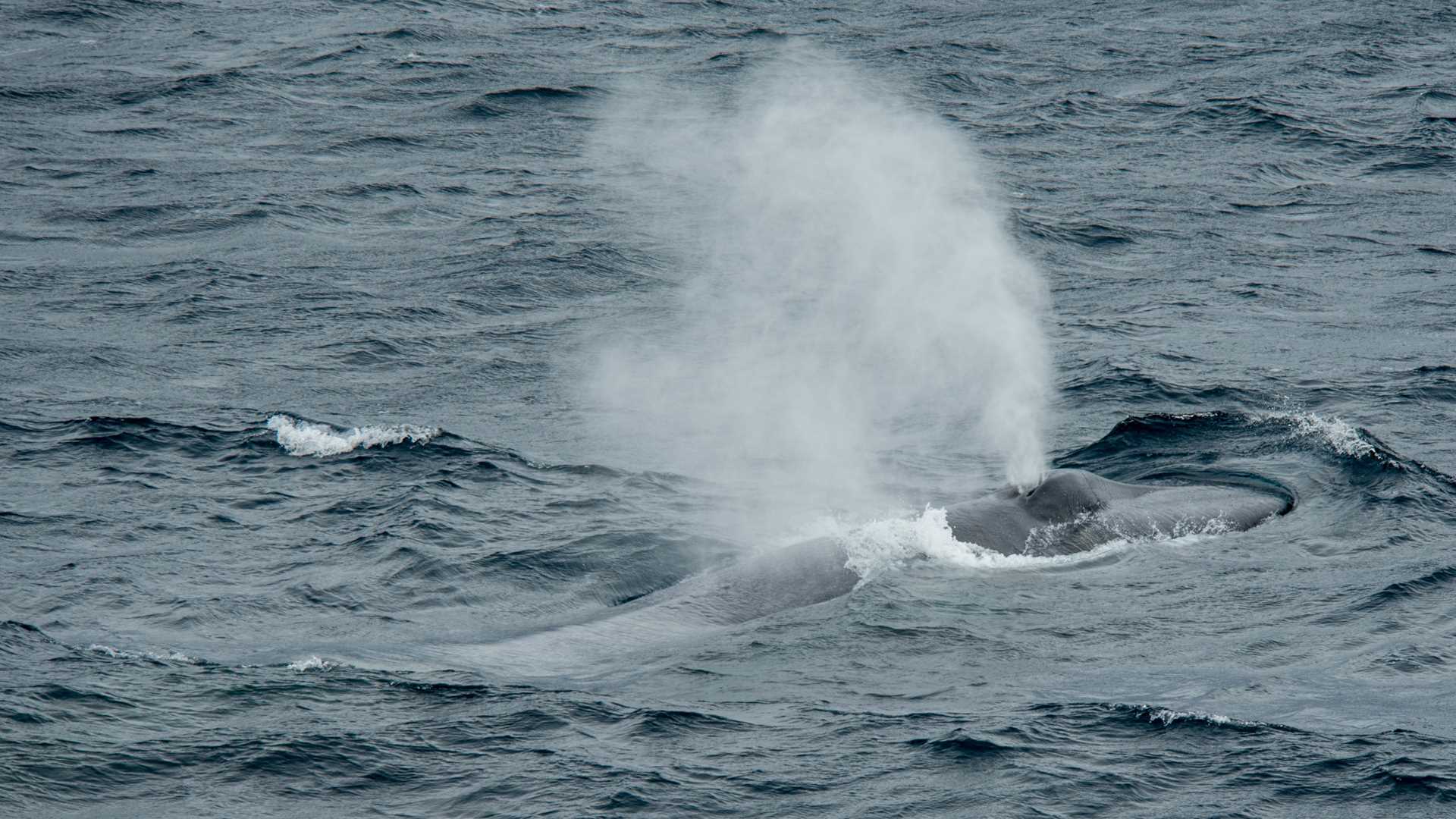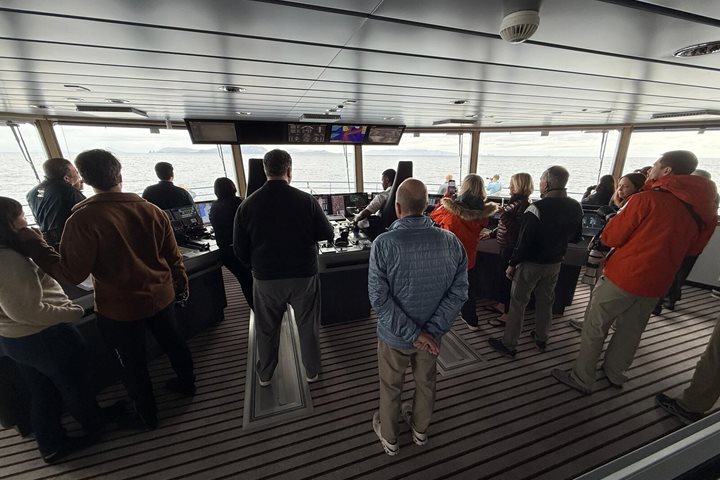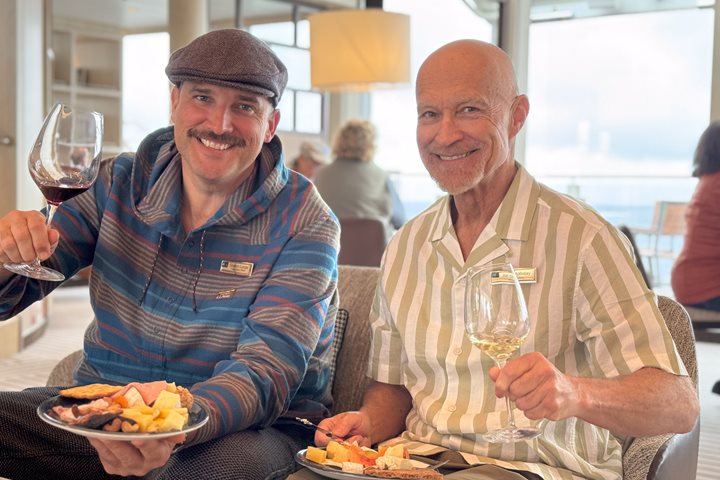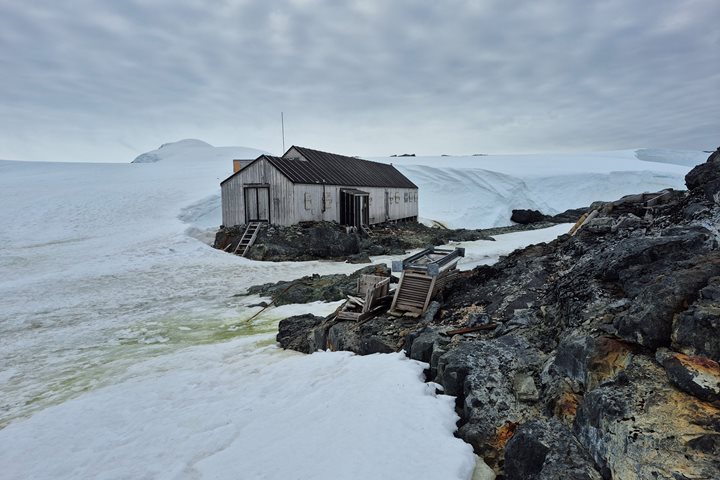This phrase has been uttered, well, daily since National Geographic Endurance arrived at the white continent; today has been no different. Continuing to explore the wilderness of the Weddell Sea, sharp eyes on the bridge spotted a sign of the largest animal living – the spout of an Antarctic blue whale. With winds gusting over 50 miles per hour, every guest braved the outdoors to get incredible looks at not one but three of these graceful creatures as they surfaced between feeding dives here in the Southern Ocean. After lunch, expedition staff and guests made landfall on Paulette Island.
Here, Carl Larsen and 17 crew of the Nordenskjold Expedition survived in a small hut made of stone while stranded through an Antarctic winter in 1902. Walking among Adélie penguins and Weddell seals, guests took in the sights, sounds, and smells of one of the wildest places on earth before returning to the luxury of a 21st-century expedition ship.







